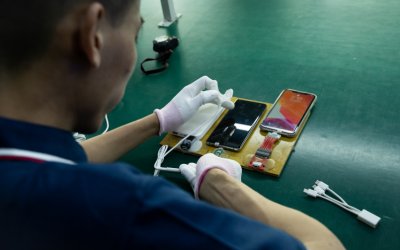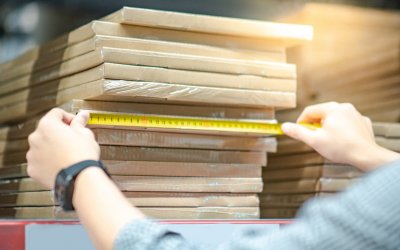If you’ve spent any time manufacturing you’ve probably conducted a quality inspection on your order. And, in the process you most likely use AQL standards to determine the defect limit you can accept for your order.
We’ve covered AQL extensively here and here. But for the sake of understanding this article more clearly you can see the definition of AQL below from the Insight Quality glossary.
Acceptance quality limit (AQL): In a continuing series of lots, a quality level that, for the purpose of sampling inspection, is the limit of a satisfactory process average.
Put simply, every order is going to have defects that are allowed, how many is too many – what is acceptable to you?
For the purpose of determining whether an order’s quality meets your requirements, the use of AQL for inspections is the most effective. Certainly, if you’re just getting into good quality practices you’ll want to start with AQL inspections and ensuring your orders have a passing result.
Once you have established a history of AQL inspections and achieving consistently passed inspections then the next step is understanding the actual quality level of each order AND your suppliers ability to provide consistent high quality with the least amount of defects.
There is a chance that some of your current suppliers are passing inspections, within AQL, with flying colors but delivering a higher percentage of defects than a comparative supplier.
The good news is there’s a method that the garment industry has been using for a while but hasn’t been widely used in other industries.
But it should be!
What’s this method?
It’s called OQL.
Observed Quality Level
Observed Quality Level is the percentage of defects that are actually found during an inspection.
In a standard AQL application the quality inspector thinks in terms of PASS/FAIL.
Did the inspection pass?
If yes then the lot is acceptable and it should be shipped to the consumer.
However, not all PASS results were created equal.
Some lots will pass with a larger percentage of defects than the same lot size from a comparable supplier.
But AQL doesn’t account for this. It’s function is only to determine PASS/FAIL based on the amount of defects that have been deemed acceptable.
With OQL all of the defects are used and it becomes clear which suppliers are serving up passing AQL marks but still delivering higher percentages of defects.
Let’s look at an example.
Two factories can have a 100% pass rate but different levels of quality.
Assuming only 1 inspection
Order size is 1000 pieces of one style.
General Level 2
AQL Major is 2.5
AQL Minor is 4.0
Sample Size will be 80
then
Allowed Majors is 5, Reject if 6
Allowed Minors is 7, Reject if 8
(You can double check these numbers on our AQL chart found here.)
The formula for determining OQL is OQL = DEFECTS ÷ SAMPLE SIZE
With this in mind the results for two hypothetical factories could differ substantially.
Factory 1: 4 majors, 7 minors = OQLs of Major: 4/80 or .05%; Minor 7/80 =.0875%
Factory 2: 0 majors, 2 minors = OQLs of Major: 0/80 or 0%; Minor 2/80= .025
This means that even with a “PASSED” result Factory 1 could expect 50 major defects and 87.5 (88) minor defects in their 1000 piece order.
Remember AQL = Acceptable Quality Limit. As these are consumer goods, there is going to be a level of defects that buyer must deem acceptable – this level of defects wouldn’t be acceptable in a higher risk/critical component. (Think airbags in cars.)
Factory 2 would expect 0 majors and 25 minors (of course this is a sampling defect so possible there are going to be some majors found in a 1000 piece order even though none were found during an AQL inspection).
Factory 1 would have 50 more major defects than Factory 2 and 58 more minor defects.
Yet, they would both have a “PASSED” result.
Why it’s important for you to start using OQL
It makes sense to look at other metrics/data beyond just pass/fail rates.
If you already have an established inspection program, using OQL data can allow for an increased ROI on quality spend by reducing the number of inspections at factories with low OQLs. (Factory 2 in our example)
Simultaneously you would increase the number of inspections at factories with high OQLs / high pass rate (or low failure). (Factory 1 in our example above)
Increasing inspections at factories with high OQL and reducing inspections by the same amount at factories with low OQLs will keep the total spend the same but allow you to increase the amount of issues “caught” during inspection.
In the long run this approach will help you to spend your quality inspection dollars at factories with lower quality.
Putting the money to use where it’s most needed.
OQL is the Smart Choice.
In summary, using OQL data gives you the opportunity for a more COMPLETE picture. You can put your quality dollars to good use by making sure you’re spending where it makes the most sense and yields a greater return on your investment in conducting inspections.
Let me help you
Leave a comment to let us know how you use your quality data. And ask any questions about how to assess the data for your purposes.
We’re answering every question and responding to every comment on the post.
Let us help you out.




Hi
Very useful information.
I have one doubt, If we calculate OQL= (Major defect+Minor defect)/sample size., is it correct formula?
Yes, if you want a combined OQL for all defects the formula you have is correct. OQL= (Major defect+Minor defect)/sample size.
Nope. I think it’s important to mention major and minor defects separately to understand the situation of inspection. Any major defect is highly observable, where’s minor defects are sometimes negligible. We always keep eye on major defects to save costs of quality.
If you want separate Major and Minor OQLs then it is easy to adjust the formula to reflect the distinction. Whether to be concerned with only Major defects is a decision each company should make for themselves. This article explains the differences between Critical, Major and Minor defects. https://insight-quality.com/aql-defect-classification/
I need oql chart
The formula for determining OQL is OQL = DEFECTS ÷ SAMPLE SIZE
Hi..for example on lot of 1000 pcs, we are performing random sampling level II AQL 2.5 for major & AQL 4.0 for minor and shipment is passed by our end.
Upon receiving at brand’s warehouse the lot got failed at initial inspection and they want to go for 100% inspection.
What should be the maximum percentage of defects allowed to accept the lot in 100% inspection by Brand?
There is no set percentage on what the maximum allowable defects when conducting 100% inspections. What is considered unacceptable would need to be determined on a case by case basis with your client.
Hi,
OQL and DHU same or not?
OQL (Observed Quality Level) and DHU (Defects per Hundred Units) are similar but the formulas are not exactly the same. DHU is primarily used in garment manufacturing when 100% inspection are conducted during different manufacturing steps such as cutting, sewing and finishing. To calculate DHU you would multiple the OQL result by 100.
DHU = (Total Number of Defects x 100) / Total Pieces Checked
OQL = Defects / Sample Size
Good information I got but can someone explain what is the difference between OQL and DR% I think both are same meaning but I am not sure
We’re glad to hear you’ve found the information valuable. We are not familiar with DR%. If you can provide the definition and formula for DR% we can review and confirm if it is similar to OQL.
OQL and AQL same or not.
could you give me the OQL report chart more detail ?
OQL is a result that is calculated based on actual inspection results and there is a not a chart like an AQL chart. If you have specific question would like to discuss feel free to make a free, consultative appointment with us to review. https://insight-quality.com/contact-us/request-an-appointment/
this is old theory AQL major 2.5 and Minor 4 now days we doing AQL 2.5 means straight 2.5 major plus minor
Each company should decide their level of risk and implement inspection criteria that meets their needs.
Thanks for the valuable information.
Thank you for the compliment.
One more question.. which is the statistical relationship between AQL and OQL. It is logical that a company with a higher OQL will remain in rejected lots. In other words, which is the expected OQL for an AQL of 2.5?
Thanks for your question, Jose — There is no relationship between AQL and OQL as they are separate and distinct data. When using an AQL of 2.5 for Major defects there is no expectation on what the OQL would be, either for a passed or rejected inspection result.
Nice information! Do we count the defects we found in a failed Audit also for the OQL? This failed audit will not be sent it will be re-checked and then when passed, we have the real OQL. Especially because some call it Outgoing Quality Level. What is yr opinion about this?
Outgoing Quality Level is distinct from Observed Quality Level and is generally used inconjunction with Incoming Product Quality. If you are wanting to utilize Observed Quality Level as detailed in this article then all inspection data, including failed results and observations, should be included in the calculation.
Hi Insight, thank you for such a clear explanation. I have 2 questions:
1. I heard the OQL is the acronym for Overall Quality Level.
2. How to determine the sample size if we use OQL?
Hello Jason,
In reply to your questions:
1. We are not familiar with the term Overall Quality Level. We generally use OQL to mean Observed Quality Level.
2. Calculating OQL is based on the data from completed inspections. Insight Quality generally conducts inspections using AQL General Level II. However, each company should decide their level of risk and implement inspection criteria that meets their needs.
Hi, thanks for your best information, i have a question “why we calculated defect x 100/checked qty to know DHQ even we calculate defect/sample size to know OQL why we use this defferent formula